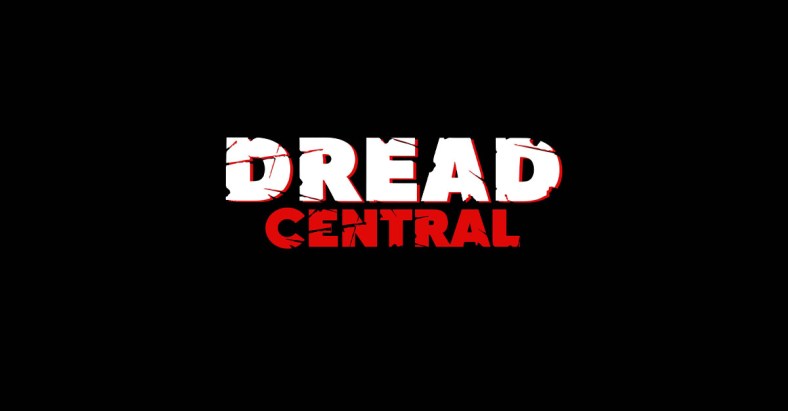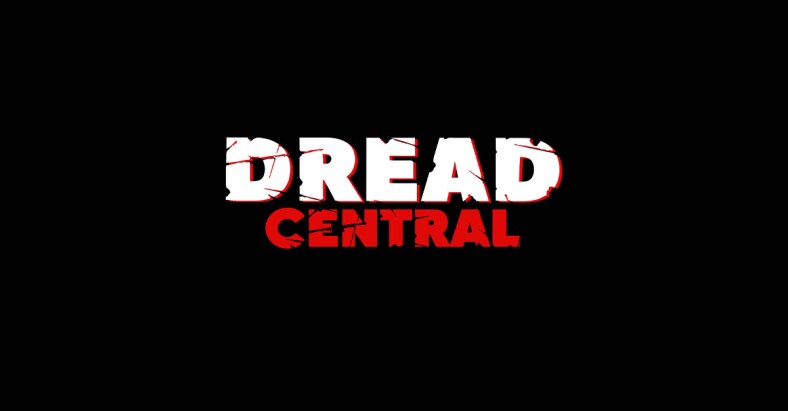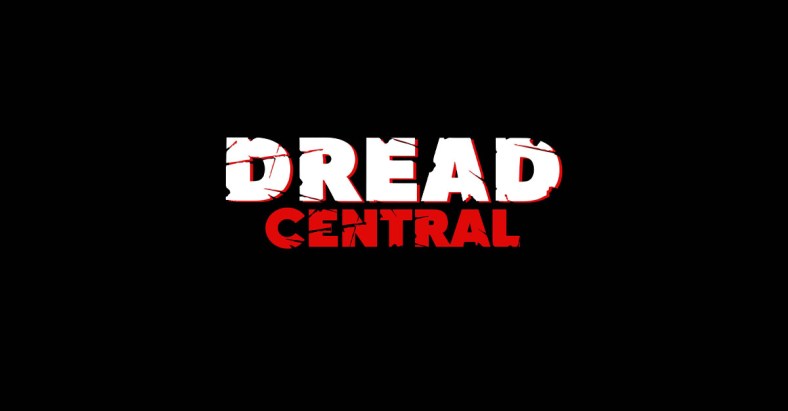Interview: Nick Antosca Talks About Channel Zero and His Role in Finding Fresh, Exciting Talents

When I first heard that the creepypasta-based TV series “Channel Zero” was going to appear on Syfy, I didn’t have the highest of expectations. And I don’t know if anyone can really blame me. But then stills came out, followed by footage, followed by episodes, followed by reviews, and the general consensus was that the series was surprisingly, get ready for this, really, really good.
When I got the offer to chat with Nick Antosca, the showrunner and mastermind behind the series, I sat down and binged through the six episodes that made up the first season, “Candle Cove”. What I experienced was a mind-bending journey into a world that felt both real and surreal concurrently. It was a show of beauty and grotesque imagery, often rolled into the same moment and it was based on a story that seemed simple yet offered layers of intriguing possibilities. For only being six episodes, it drew me in and left me satisfied yet craving more of the same kind of narrative approach. That’s where the second season, “No-End House”, comes in.
Below is an interview with Antosca where we discuss the series, the upcoming season, and a whole lot more. If you’re excited about tonight’s premiere of “No-End House”, this is one interview you won’t want to pass up reading!
“Channel Zero: No-End House” will be comprised of six, one-hour episodes directed by Steven Piet (Uncle John). It follows Brian Russell’s story of Margot (Amy Forsyth, “The Path”), a young woman who, along with her friends, visits the No-End House – a bizarre house of horrors consisting of a series of increasingly disturbing rooms. When she returns home, Margot realizes everything has changed.
“Channel Zero: No-End House” premieres tonight on Syfy at 10/9 central.
Dread Central: A lot of people probably have that pre-conceived notion, “Oh, it’s the people that do Sharknado”, so how do you kind of combat that, especially with a show that’s so opposite of that, so beautiful and engaging and terrifying?
Nick Antosca: Before I answer that, did you watch the first season, second season or both?
DC: I’ve only seen the first season but just recently got access to the second season.
NA: Cool. So yeah, the first season obviously, nobody had any idea of what it was going to be, exact expectations, and when you hear that there’s going to be a show based on something called “creepypasta”, which is a silly name, and it’s about a haunted puppet show, I think you kind of expect something campy, right? Maybe the best case scenario would be a “Tales from the Crypt” type of thing.
Each season we do is going to be different but I very specifically wanted the first season to be in a style that was completely opposite of that so, right out of the gate people said, “Well, this is not what I was expecting!” Much more indie film art horror which is what we always wanted to do. I don’t know if you’ve seen Craig O’Neil’s film ‘The Boy’, not the puppet one but the one about a young sociopath, it’s a really beautiful film and a really restrained, really oddly pastoral and sinister and so I wanted to have a sensibility like that for the first season of “Channel Zero”.
When we talked to SyFy and told them what we were going for they were very supportive and very cool about it and we sold the show to them over a number of other places that were bidding for it, in particular because Bill McGoldrick from SyFy called me and we kind of talked about what the show could be and were very excited by that. We talked about our influences being Polanski, Kubrick and Stephen King, which are obviously ambitious but we really wanted to be that and not campy.
Every season is going to be a totally different flavor but every season will rely on dread and atmosphere rather than jump scares or gratuitous horror and also specifically, I really wanted every season to be visually composed and beautiful so No-End House feels totally different from Candle Cove but the same standards of remarkable visuals apply.
Dread Central: Ok, and I love that you brought up in Candle Cove it’s about a haunted puppet show and theoretically that sounds very campy and very Tales from the Crypt but it was approached in the complete opposite way. It was taken very seriously, it was taken as something incredibly sinister and in horror, there are so many tropes that many people think of as campy and almost laughable but you did the opposite, and that’s what really stood out to me about Candle Cove. What I’m excited about with No-End House is this kind of mirror image of what I expect and keeping me on my toes, and I’m wondering if you can tell me about how you see those tropes being almost challenges and how you kind of take them on in a new approach?
NA: Yeah, I see them as opportunities because they come in with built-in expectations and when you have those you can use them, you can subvert them. If you build characters around those tropes and give the characters something powerful to deal with then, to me, that’s how you get into a place where it becomes psychological horror rather than gratuitous horror.
Both Candle Cove and No-End House, while very different, deal with some of the same themes, of characters struggling with deep trauma from their past and this supernatural element, using that against them. The concept of the No-End House is the deeper you go inside the house, the deeper it gets inside your head and what it finds there it uses against you.
DC: And I can almost see that relating to Candle Cove, it seemed that as the characters there went deeper into the mystery, the more terrifying and immediate it became.
NA: Yeah, it became more subjective and psychological the further we got into the season. Episode five of Candle Cove, where Mike starts to imagine himself as the puppet and really start to break down, is maybe my favorite episode of the season for that reason.

DC: Now I do want to bring up the fact that these are all based on Creepypastas and by the nature of a Creepypasta it’s a shorter story, which allows for a shorter season length. Obviously there’s going to be some benefits to having a shorter amount of time but there’s also going to be challenges. So I’m wondering how do you balance those to make sure that you give sort of a full meal, where people are used to thirteen to eighteen to twenty six episodes versus less than that?
NA: Well the obvious advantage is it lets us tell a complete story without filler, so we can see the goal line when we start. We only include in the season the things we want to include, that we feel are essential. Obviously if you have even twelve episodes, often between episode seven and eleven things start to lag and we don’t find ourselves having that problem in the writers room. If anything, we wish we had a little more room, but it allows us to tell the story in a very compact way and the brevity of the Creepypasta format is kind of ideal because the Creepypastas that we adapt are ideally a great horror concept with the suggestion of a larger world, so there’s a lot of room for us as horror story tellers to play and to invent.
We think of each installment of “Channel Zero” as the nightmare you have after you read the original story, so we have a writer’s room that’s populated with some excellent horror story tellers, my friend Don Mancini who created ‘Child’s Play’, who I know from “Hannibal”, there’s Harley Payton who wrote or co-wrote like half the original episodes of “Twin Peaks”, and there’s a couple of wonderful staff writers so we have a lot of great horror minds in the room and we take the original story and build on it while trying to honor the spirit of the original author.
DC: I would love to be a fly on the wall of that writer’s room, just for the pedigree, for the amazing amount of stories that must be told in there from all of those writers, it’s kind of astonishing. I’m wondering, with all that experience in the room, do you find there are ideas that are almost too complex to capitalize on or do you find it’s this breadth of styles, going from Don Mancini’s Child’s Play to Twin Peaks to Hannibal, that it allows for a far more rounded and richer storyline that can come out?
NA: Well it certainly adds to the richness of the storytelling. I mean Don and Harley are idea machines and great collaborative writers and I remember on the first day in the writers room, on the first season, I kind of thought to myself, “Wow, what’s going on here, how did get these guys to agree to do this?” I mean Don for example, he’s a feature guy, he’s only done one TV show before which was Hannibal where I met him, so it was through personal connections, I’d call them up and say, “Want to come do this?”
But in terms of ideas being more complex than we can execute, not really because these guys are such experienced storytellers, part of what comes with that experience is building and pitching clean, executable ideas. It’s not the complexity of the idea that’s important, it’s the kind of gut level power of it.
You know, people pitching overly complicated ideas are the sort of thing you see rookie writers in writer’s rooms doing. Harley and Don, when they come up with an idea and pitch it it’s usually like really clean and it’s like oh shit, that’s an episode! The idea in Candle Cove of having an idea where the daughter shows up and we realized she’s inhabited by the spirit of the dead brother was Harley Payton’s idea originally and it was like what if we do this and shit, that’s an episode.

DC: I do want to broach the idea of how it seems that we’re in a bit of a golden age of horror on TV, where it’s not only very serious but it’s very successful and it gets a lot of fan love. Although we do see that in some situations shows end a bit prematurely…if you can’t tell I’m still very salty and upset about “Hannibal”! [laughs]
NA: [laughs]
DC: …but you look at something like “The Walking Dead” and you look at “Hannibal”, you look at “American Horror Story” and you see that the production value is amazing and taken seriously and horror has never been as ubiquitous as television as it is now. They’re really taking chances, as we saw for instance with “Twin Peaks” and I’m curious, when it comes to “Channel Zero” how do you feel it fits into this timeframe that we’re in but also, what does “Channel Zero” do that challenges and pushes horror forward on television?
NA: I do feel we have this opportunity because we’re in this strange cultural moment where there’s a ton of TV, there’s great horror on TV and because of that and because we needed to distinguish ourselves, given the opportunity to experiment, to push boundaries, to do things that we might not be otherwise able to do, I wanted with “Channel Zero” to create a space for indie art horror on TV, that I didn’t really see in any of those other shows in quite the same way.
There were a couple of specific things I wanted to do, one is offhand, I don’t know of any other show at all doing. If “True Detective” had continued with one director per season they would be doing it but for some reason they didn’t, but the opportunity to have each season be a showcase for a really exciting indie art horror director, and to have the show be an incubator for these really exciting young talents was incredibly appealing to me, also because there are people out there like Craig and Steven and our amazing director for the third season, who I just wanted to work with because I got excited seeing their films, and also I felt like there was a collaborative space in TV that wasn’t entirely being taken advantage of so I wanted to bring in artists and other kind of horror minds who I thought would be great in the genre but who hadn’t had the opportunity yet.
For example, I try and bring in an artist every season so in the first season it was Olivier De Sagazan, the performance artist, who covers himself in clay and transforms himself, he plays the Skin-Taker and we had watched his videos in the “Hannibal” writing room, I’d seen his performance art and thought he was incredible. He’s in the film ‘Samsara’ and so we reached out to him, flew him over from France and, for season two, Guy Madden, the indie art filmmaker and installation artist, created some of the videos within the show for No-End House. There’s a sculptor named Sarah Picton who, I knew her stuff from the art world, she created some of the sculptures inside No-End House and she was an art consultant, she helped us conceptualize some of the other horror elements that you see throughout the season, so basically this culture that you’re talking about allows for a space where we were able to experiment and create some stuff that was really different.
DC: I love this idea of you taking on this role and responsibility of giving opportunities to indie artists and directors and kind of giving them a chance. In a way that’s the whole basis of Channel Zero, because it’s based on Creepypastas by internet writers that probably otherwise don’t get much notice and I’m wondering if you can just talk a little bit more about that, about this role that you’ve taken on?
NA: There’s so much talent out there. There’s just a tremendous amount of vision and talent out there that if it were the early nineties the world of features might be snapping them up but it’s really hard to get features made now or to get them seen or distributed now and now TV is like a gold rush so the default when you’re hiring TV directors from a studio network perspective is, we’ll hire the journeyman who has directed a ton of episodes, whatever, CSI, and knows how to make our day and deliver a show on time and on budget.
But what was really important to me on this show was to bring in collaborative auteurs, real visionary interesting directors who I could collaborate with and who would take what we saw in the writers room, honor that but also bring their own ideas to it and take it further. So on set, unlike most TV, it’s not like the director is a traffic cop, we’re there on set and it’s a really exciting and cool collaboration. It’s a dream job for many reasons but one of my favorite things is collaborating with directors like Steven Piet and Craig Macneill.
DC: Well, I’m sure they appreciate it enormously, I know we appreciate seeing these new voices being given a shot so Nick thanks a lot, I hope we’ll be able to talk again soon.
NA: Cool, take care man.

Categorized:News

